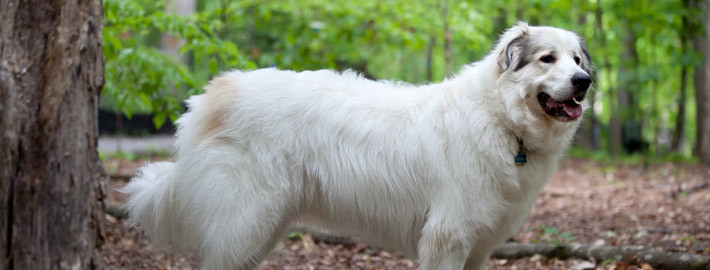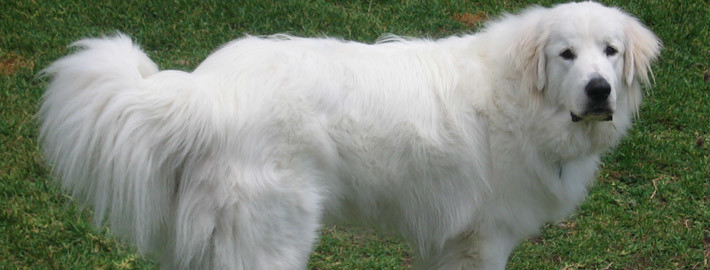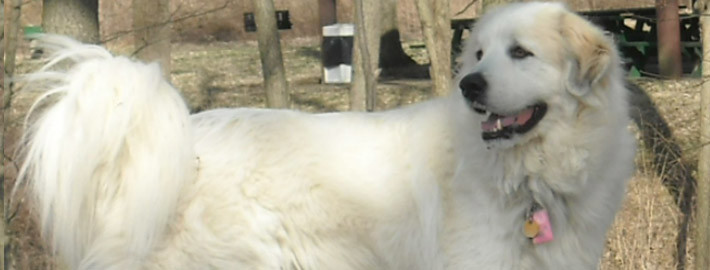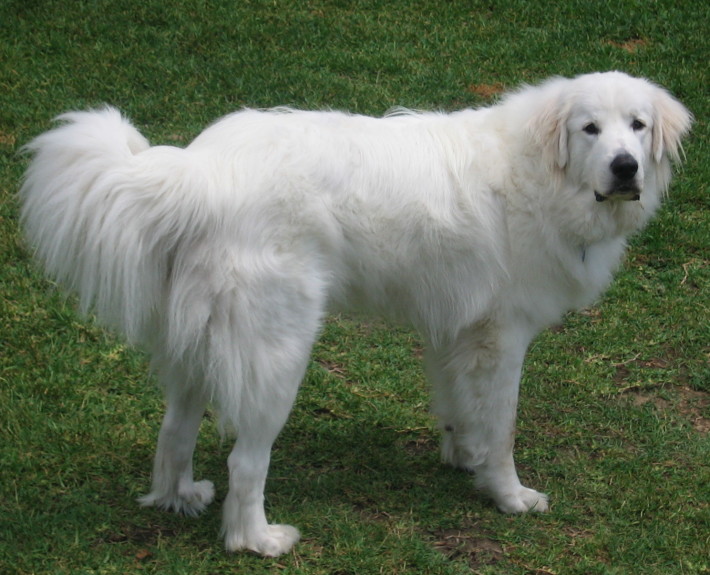What makes the Great Pyrenees Unique?
This large working breed is native to the Pyrenees mountains of Spain and France where they typically serve as livestock guardians. Great Pyrenees dogs are great with children and other small creatures.
Breed Groups
Page Contents
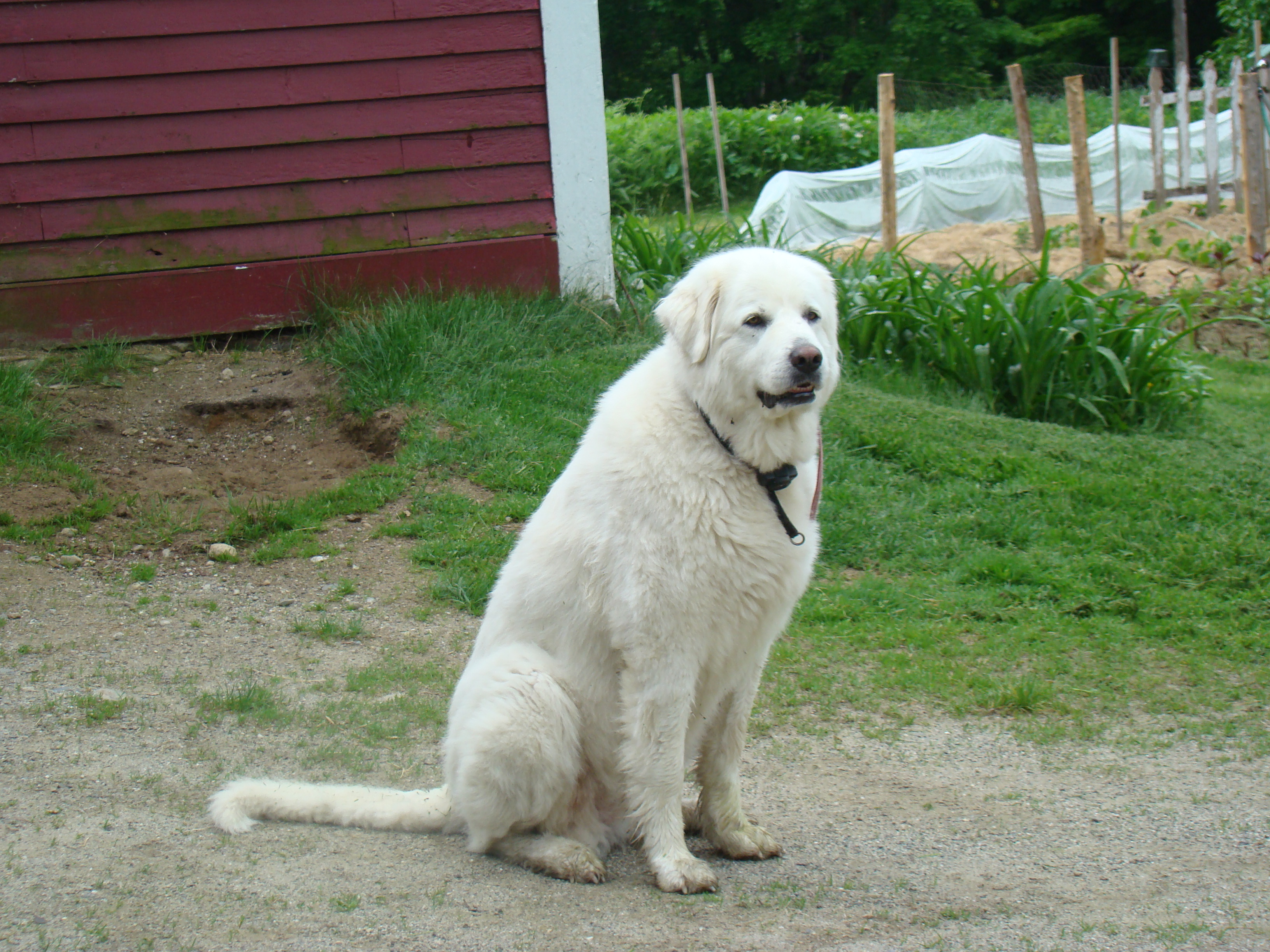
Is the Great Pyrenees Right For You?
While affectionate with his family and quiet and tolerant in general, if there is something to guard or protect, the Great Pyrenees can become quite territorial. Because they were bred to work independently and make decisions on their own, Pyrs may not be the star of the local obedience class. The breed should be exercised daily on leash or in a fenced area. New owners should be prepared for barking, especially at night, and brushing approximately once per week. If you are considering purchasing a Great Pyrenees puppy, learn more. *Working Group; AKC recognized in 1933.
*Ranging in size from 25 to 32 inches tall at the shoulder.
*Protector of sheep.
In 5 Words
- Gentle
- Confident
- Patient
- Fearless
- Affectionate
Characteristics
Learn About the Great Pyrenees
Description
General Description
These elegant dogs have thick, predominantly white double coats that make them seem larger than they actually are but, even so, they are still quite imposing. Members of this breed have black noses and eye rims. Their dark brown eyes tend to have a contemplative expression in them. The double dew claws found on the dog’s hind leg are feature that is specific to this breed. These agile dogs should move with a fluid gait. Great Pyrenees’ have a plumed tail that may be carried low when the dog is at ease or form a wheel shape when they are alert.
Size
Females of this breed stand between 25 and 29 inches (64 and 74 centimeters) in height and weigh between 80 and 90 pounds (36 and 41 kilograms). Males stand about 27 to 32 inches (69 to 81 centimeters) at the shoulder blades and are around 110 to 120 pounds (50 to 54 kilograms) in weight.
Coat
Great Pyrenees dogs have double coats that consist of a coarse outer layer that is long and flat and a dense, wooly undercoat. Their coats are thicker about the shoulders and the neck. There is also feathering on the dogs’ legs. Most of these dogs are white but they can also have differently hued face masks and other parts. These markings are typically grey, red, tan, or reddish brown. Their coats may fade in color as they grow out.
Short History of theGreat Pyrenees
When nomads from Asia Minor moved to the Pyrenees mountains during the Bronze Age, they naturally brought their dogs with them. These large white canines served to guard flocks of animals from predators and they were the ancestors of the modern Great Pyrenees breed. In medieval France, the dogs also were used to protect fortresses and chateaux. Eventually the breed became popular for a time at the Louis XIV’s royal court. In 1675, the king himself had officially named the Great Pyrenees as the “Royal Dog of France”.
The dogs were also imported to Newfoundland, Canada about the same time. This breed later made its way to various nations in Europe, but did not always resemble the original form. Fortunately, those animals remaining in their Basque homeland did and they became the precursors to the breed as it is known today. Although General Lafayette presented a pair of these dogs to one of his friends in the 1230s, the breed did not begin being imported until a hundred and ten years later. In 1933, the Great Pyrenees was recognized by the American Kennel Club. In the States, this dog is still used for guarding livestock but they have also had some success as family pets.
Temperament
Loyal to its’ family but wary of strangers, the Great Pyrenees makes an excellent guardian. These dogs were traditionally bred to look after livestock, such as sheep, and still serve this purpose admirably on various farms throughout the world. Members of this breed are typically tranquil, solemn, and well behaved. They have a tolerant and affectionate disposition when interacting with children and other family members. These dogs likewise get along perfectly fine with felines and other small pets. Indeed, it is in their protective natures to defend weaker animals. While Great Pyrenees dogs can live outside in cooler and more temperate climates, these animals become incredibly attached to their families and may prefer to live indoors with them unless there is some task that requires them to remain outdoors.
Members of this breed have a stubborn streak and they can be hard to manage at times. They are also quite large, which means that smaller adults may have trouble managing them. Great Pyrenees may additionally wander away from their homes, because they like to survey the boundaries of their domain in order to keep perceived threats out. As a breed, these dogs can also be incredibly territorial. Therefore, they should not be allowed to roam at will or be let off their leash. However, if their owners are comfortable around unfamiliar persons, Great Pyrenees dogs will accept the stranger in question and not view them as a threat. Member of this nocturnal breed are also prone to barking overmuch and will sound the alarm at night unless trained not to do so by their owners.
Caring for Your Great Pyrenees
General Health
Born in litters of 8 to 15 pups, these dogs live about 11 years on average. Minor health problems such as osteosarcoma, osteochondrosis dissecans, entropion, cataracts, chondrodysplasia, panosteitis and skin conditions may affect this breed from time to time. Major health concerns for Great Pyrenees include spinal muscular atrophy, patellar luxation, gastric torsion, hip dysplasia, and otitis externa. Owners should also note that Great Pyrenees dogs do not function well in hot climates due to their thick coats.
Care
Daily
Although this breed doesn’t need copious amounts of exercise, a brisk daily walk will suffice. These dogs enjoy cold weather and won’t mind hiking in the snow.
Weekly
It is recommended that owners brush their Great Pyrenees at least once or twice a week for about 30 minutes each time. When the dogs are shedding, more frequent grooming may be needed.
Monthly
Heartworm, flea, and tick prevention medication is a must for all dogs. These products are generally administered once a month to keep pets free of parasites.
Grooming & Bathing
Some of these dogs drool and owners with inside dogs will want to wipe their pet’s mouths to prevent them from dripping water all over the floor. Only skunked or dirty Great Pyrenees require a bath.
Exercise & Training
Great Pyrenees dogs are independent thinkers and somewhat stubborn. They are slow to learn new things and may not always obey their owners the first time around. Stanley Coren, author of The Intelligence of Dogs, ranked the breed very low in smarts as a result. However, Great Pyrenees dogs are not likely to turn on their owners or become aggressive despite their inherent willfulness.

